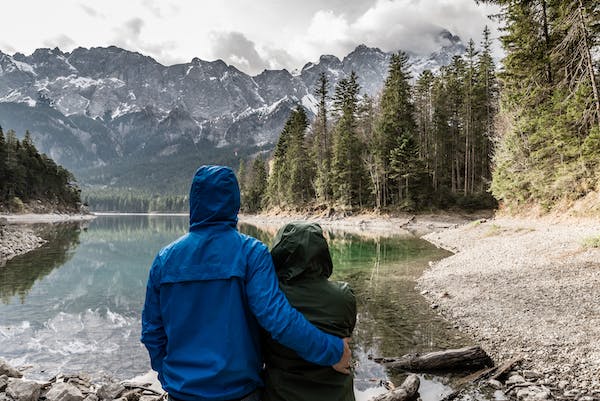Mountains are tourist attractions for relaxation, enjoyment, and research. Many people plan trips to ranges across the world to see these wondrous giant rocks. While mountain trips are fun, they are not as easy as the name indicates.
Before you set out for mountain traveling, it is essential to pre-plan and take notes of some tips. Avoiding these necessities will leave you stuck on top of a range with no one to assist you. It may also lead to issues that can be a real fun-killer. Therefore, follow the tips below before you set out on a trip to the mountains.
1. The Essentials Before Leaving
When setting out for such trips, make sure you are well-prepared mentally and physically. To do so, you need to start your preparations a good while ago. Eat a healthy balanced diet with lots of carbohydrates for instant levels of energy. We recommend taking carbohydrate-rich fruits with yourself in your backpack. You should also be hydrated. Hence, drink plenty of water and pack bottles, so you are not out of it in the mountains.
2. Take A First Aid Kit
While the right kind of gear, food, and clothes are a necessity before you set out in the mountains, first aid essentials are a must-have as well. Read about common mountain trip injuries and the relevant first-aid procedures. Make a custom kit in accordance. We also recommend knowing the numbers of emergency services operating in that range.
3. Map Out Your Path
To make sure that your trip is safe and enjoyable, map out your path beforehand. Look and search for safe routes where you are planning to go.
Keep a topographical map to identify routes as gadgets might not catch signals for GPS navigation in those areas. Try to reach the destined place half an hour before camping your tents. If you want to stay in a hotel, make a booking the day before.
4. Inform About Your Whereabouts
Track your location and information about your whereabouts if you are at dangerous ranges.
When you head out, try to inform someone before leaving to local officials. Doing such a thing can help them track you down in cases of emergency.
5. Dress Properly
Layering is the best thing to do for such trips. The upper being water and wind-resistant, while the second under it needs to be a removable insulating layer. Footwear should consist of boots with insulating socks. If you fear sweating can cause allergies for feet, buy anti- sweat socks. If you still want to choose a fashionable dress and look chic, wear sporting gear. Make addition of sunglasses to your outfit to protect your eyes from reflected UV rays of snow. Make sure to invest in being a genius.
6. Take Bottles And Lots of Snack With You
A trip at high altitudes and thinking about what to eat? You would not be packing full meals. During such trips, taking water bottles and snacks that contain high amounts of protein and carbohydrates is the best choice. Climbing the hill and using these to catch up with hunger will provide you energy and boost up your mood with its tastefulness.
Many people think they can use a natural spring for their water supply. However, it contains bacteria and parasites which can harm you. Carry iodine tablets or filters with you to get rid of such harmful germs. Take water bottles with you.
7. Do Not Disturb Wildlife
On mountain trips, it is common to encounter wildlife. Avoid entering places where you see animals. However, if you travel in such areas and see wildlife, maintain safe distances from animals and stay in groups. Avoid picturing and disturbing them.
8. Hire a Guide
If you’re going on a mountain trip for the first time, hire a guide. Guides are chosen individuals with professional mountaineer training and experience. They guide you, usually within groups, to the local ranges and educate you about them. They know the routes, rules, and regulations, and everything to make your trip fun.
9. Do Not Go Swimming
Many people tend to go swimming on trips, not being aware of its disastrous after-effects. Due to ignorance, they suffer from hypothermia because of the cold temperatures of lakes and rivers. Avoid doing such an activity. Unless your guide permits, you should stay away from water bodies.
10. Have Hiking Training
Hiking appears to be easy, but it is not. Many people find it hard to fight obstacles, get out of breath, and have low stamina. These days people assume looking good and being fit are all required for mountain trips. However, being able to climb without a hurdle is a myth.
Many professional climbers tend to lose their breath and have told people to see this as a challenge. So, do some cardio, join a gym or do leg exercises. Try drinking stamina drinks.
11. Follow The Weather Forecast
The temperature above the mountains is cold and might be dry sometimes. Checking the forecast and planning trips under it is beneficial. The weather above changes very quickly from cold to scorching heat. Going out there with essentials according to the weather predicted can help you a lot.
12. Take Measures Against Altitude Sickness
Higher altitudes have thinner air, which can cause you to experience altitude sickness. Altitude sickness is felt within 72 hours after you are at indifferent elevations that start at 2000 ft. People who suffer from this have claimed that it gets worse at night. Check ways to deal with altitude sickness.
The Conclusion
With our 12 top tips for traveling in the mountains, you can enjoy nature with safety. There are multiple mountain ranges to witness. You might want to check the longest mountain ranges of Europe, Australia, or America (South).

